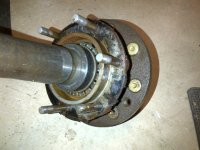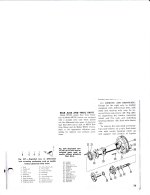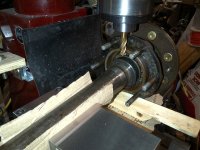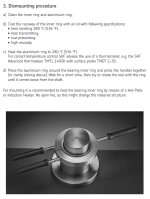Coyote machine
Super Member
- Joined
- May 4, 2009
- Messages
- 7,641
- Location
- Southern VT
- Tractor
- 22 SANY SY 50U, '10 Kioti DK 40se/hst KL-401 FEL, loaded tires, KB-2485 bhoe, Tuffline TB160 BB, Woods QA forks, MIE Hydraulic bhoe thumb & ripper tooth, Igland 4001 winch, & GR-20 Log Grapple. Woods BBX72" Brush Mower. Diamondplate aluminum canopy
Keep it flowing from outside to inside like the pic/diagram. Outer seal, find a socket or something big enough to press on the outer edge of the seal when you go to replace it in the casting.
To remove anything use a seal puller tool from any auto store. Take the old bearings to a auto store and see if they're stock size. Replace or reuse, your choice depending on condition of existing ones. Pack them full of wheel bearing grease. Exchange brake shoes and keep spares for when you tear down other side drum. Cut drum if needed, or not. Pattern in drum will wear itself into new shoes if you don't cut it on a lathe.
To remove anything use a seal puller tool from any auto store. Take the old bearings to a auto store and see if they're stock size. Replace or reuse, your choice depending on condition of existing ones. Pack them full of wheel bearing grease. Exchange brake shoes and keep spares for when you tear down other side drum. Cut drum if needed, or not. Pattern in drum will wear itself into new shoes if you don't cut it on a lathe.




